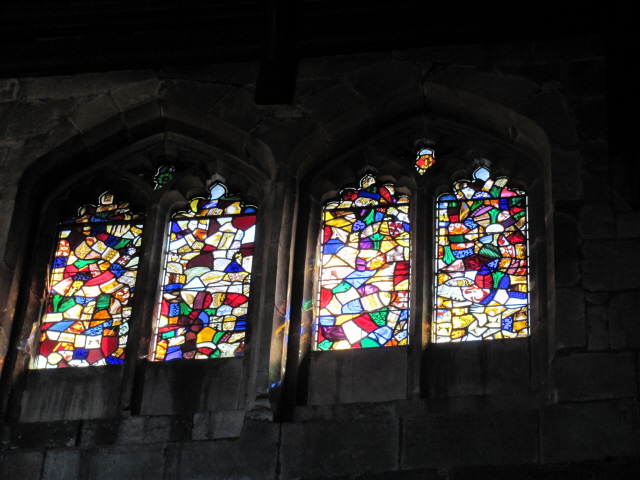It’s already over a week since I got back from Wales and I’m still typing up blogs from that trip, but I think this is the last. Strangely it’s delay has caused it to wait long enough for a small article of some significance to appear on the BBCs website but more of that at the end.
At a reasonable time for lunch, Bev and me headed off with the intentions of slotting in one of Morrison’s very reasonably priced all day breakfasts before nipping across to Ellesmere to admire their sculpture trail. But while I was standing in the queue about to fill my teapot, Bev spotted something amiss. A complaining customer, and then she noticed that all the other customers were looking that way, much in the way merecats do, and then she noticed that all the table still had numbers on suggesting that none of the full restaurant had received any food – indeed they hadn’t, the kitchen staff of 1 was becoming increasing bogged down and they claimed an hours delay in serving (probably optimistic). We left, only to find Morrison’s café in the next town having similar problems (not quite so bad). We eventually found a little café which provided a lovely breakfast at 3 o’clock in the afternoon and two highly cherried sticky buns.

There is some debate between us as to quite whether the equation between a trip to the loo and fag break comes to less or more than 5 minutes, either way that’s how long the tourist information had been closed by the time we got there, so we set out, leafletless, for a walk round the canal where we were lead to believe there where sculptures to be found. Some we found, like Mercedes Cano’s Shoal of Fish, described accurately as, “Each piece was made and welded together in the old forge at the canal yard” (you can’t really go wrong when you just stick to the facts), some we saw in the distance but couldn’t decide whether they were a sculpture or a misplaced shopping trolley and at least one piece we think we just walked past, such was the minimalist approach.
When we eventually managed to pick up a leaflet later on from the information point by the Mere we discovered that the pieces by the canal we from the 2010 sculpture symposium. Never mind, we now had a leaflet and were in a position to examine the 2009 symposium pieces armed with the information about them.
Glacial Menhir by Louis Alfonso - The catalogue says "This is a communication between the soil, land and Mere". This blog says "Hmmm" There is a 3rd rock hidden in the long grass here - seems that grass cutting has been suspended around the sculptures.
Puerto del Agua by EmilianoSacco. Catalogue says "I've tried to show the relationship between the rock and water". I say, "It's a bit like a Nik Nak. Quite nice."
A Prisoner by Tom Gilhespy, Catalogue says, "This rock has been moved from the north by glacier and I've chained it down now". Bev and me are both known to pick up the odd pebble from time to time and Bev was reminded of the poem about the stones that move, I think it might be in my old blog somewhere. We liked this.
Grasshopper on the sculpture
We think this is a Scotch Argus (Erratum - I now think it's not a scotch argus but something else??)
A Fallen Tree by Mother Nature (uncatalogued)
Rotation 2 by Trevor Clarke Catalogue says "This reflects the journey of the rock on it's journey here"

By now, having obtained the leaflet telling us where everything was, we could have made our way to the rest of the sculptures that we had missed but they were a fair way away and, to be quite honest, we were feeling completely underwhelmed and the photos on the leaflet didn't look like we would have been heading to see very much, so we didn't. On our return we did see on the net that there were a few interesting items that were not in the leaflet, of which the boaty arrangement on the left is one, but we'll live.
Yesterday I read on the BBC that there is to be a sculpture symposium here in Kirkcudbright from the 27 of this month till the 4 of September. I shall be gone to the Folk Festival at Portpatrick for the last few days of it but I doubt they'll be rushing off with the results so I should get to see them. I'll be interested to see the results in the light of what we saw in Wales.
























































